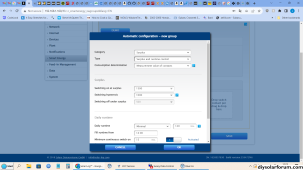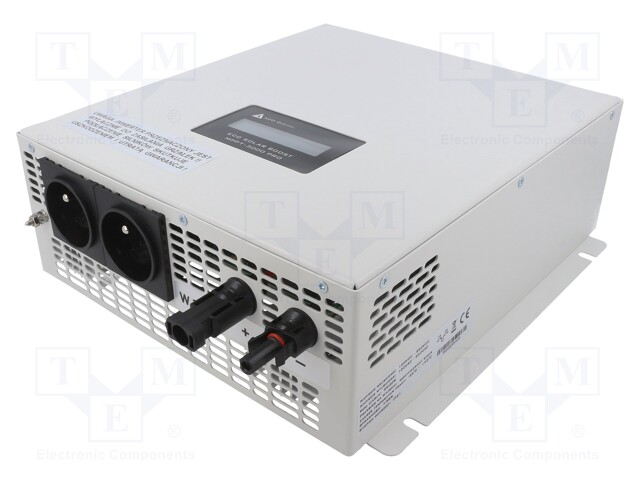Triac dimmer circuit for the load, could flicker as you say.
Here's an interesting product (I think this is the one, can't find English documentation)
I am a few weeks away from adding another 1kw in panels to my mobile system, which will give me 2.6kw total. I will wait to see what the system production looks like once everything is in place, but there have already been a few days where I am generating more energy than my batteries (10kwh of...

diysolarforum.com
AZO DIGITAL SOLAR BOOST MPPT-3000 PRO | Converter: DC/AC; 120÷350VDC; 120÷350VAC; -25÷55°C; 3500W - This product is available in Transfer Multisort Elektronik. Check out our wide range of products.

www.tme.com
It performs PV MPPT into a resistive load by means of PWM, no inductor required (presumably has capacitor bank.)
That would be MOSFET to switch off while current flowing.
Something like that, switched at kHz or high kHz frequency, should reduce flicker. Constant pulse with PWM should perform PFC, because current draw will be proportional to voltage. Probably operate off rectified AC to keep it simple. Inductor and diode to smooth current between pulses.
CT at meter + voltage is what lets MK2PV target zero export.
For off-grid use, the high wattage 50/60 Hz dimmer switch would make even worse flicker, so filtered PFC would be preferred.
What I would like is one that implements frequency-watts, grabbing surplus power before frequency-shift of AC coupling curtails PV production. SMA used to sell Smart Load, which did that.





